Boost your positive energy and wealth by knowing what plants are the best for the Feng Shui discipline and which ones you should get rid of right now!. Learn all about Feng Shui plant placement in this article. Also, I share how to balance the energy by correctly placing Feng Shui plants at home, in the bedroom, and for business.
I encourage you to read this article all the way to the end. You will learn how to align every plant and every corner of your home, even outdoor plants with Feng Shui to create a positive energy flow, and attract money and well-being to your life, your family, and those around you.
I included in this updated article the frequently asked questions received from our readers about Where To Place Cactus Feng Shui, Feng Shui Plants For Office, Feng Shui Plants In Bedroom, Best Feng Shui Plants, Where To Place Orchids In Feng Shui, Feng Shui Plants For Business, etc.
Table of Contents
What Is Feng Shui?
What Is Feng Shui? This Chinese discipline has the goal to harmonize the environment to thrive the well-being. The meaning of Feng Shui is wind (Feng) and water (Shui).
Feng Shui is the art of harmonizing the elements of nature and balancing the various yin and yang energies to enhance well-being and prosperity.
Feng Shui uses various techniques to improve the energy around us, releasing it, changing it to positive, and focusing it on what we want to change.
Your home, your office, your business. Applying and decorating with Feng Shui rules allows us to improve and change multiple aspects of our life such as personal relationships, family, partner, work, business, health, luck, or wealth.
Many people decorate their homes under the stipulations of Feng Shui. If you are into Feng Shui, this article is for you!
Plants can contribute to positive Feng Shui in many ways. Plants and Feng Shui are great allies, they help us harmonize environments, can balance the water element, and create cleaner spaces while purifying the air, adding harmony, and giving a sense of well-being.
However, not every plant will contribute to the Feng Shui at your home. Check this article to know what plants, according to Feng Shui, you should have and which ones you should get rid of right now!
So to speak, there are good and bad plants for Feng Shui. There are also some plants that can be very good for Feng Shui, but if they are placed in the wrong place they will unbalance our energy in that environment. Therefore, it is important to understand which plants are allies of Feng Shui, but also to know the Feng Shui Plant Placement.
Align your plants with the Feng Shui discipline. Check out these tips!
Get Rid of Cacti Inside Your Home or Near the Entrance
As I told you before, some plants are considered bad plants for Feng Shui. This is not quite correct. I would say that a cactus can be an allied plant only if it is located in the right place for Feng Shui. That is why Feng Shui Plant Placement is so important.
This happens with the cactus and any plant with spikes that we have inside the house. A cactus can be a Feng Shui allied plant only when it is located outdoors. So the first piece of advice is: Get Rid of Cacti Inside Your Home or Near the Entrance.
Cactus attracts negativity circulating around the house. Therefore, cacti are not advisable inside your home, or near the entrance.
Where To Place Cactus Feng Shui
Where To Place Cactus Feng Shui. For Feng Shui, the front door Feng Shui of the house determines one of the main places through which energy enters our home. Nevertheless, cacti offer great protection for the house located outside your home; on a terrace, patio, or balcony.
Where To Place Cactus Feng Shui. That is why I say that the cactus is not a bad plant for Feng Shui. It just has to be in the right Feng Shui Plant Placement. For Feng Shui, a cactus placed outside, on the terrace, patio, or balcony, away from the front door, provides great protection for our home Feng Shui.
Feng Shui Plants For Office: Cacti are recommended for your office or the place where you work, are related to success, and job recognition and will help absorb radiation from electronic devices.
Long or Pointed Leaves and Plants With Thorns
As well as cactus, long or pointed leaves, and plants with thorns are not considered good Feng Shui Indoor Plants.
Plants with long or pointed leaves or plants with thorns accumulate negative energy, causing conflicts or fights between family members. Like the cactus, plants with thorns or elongated and pointed leaves should be located outdoors where they will protect the home, blocking the entry of negative energy. You can even group it outside and they will deflect negative energy from penetrating your home.
Go through every room in your home and rearrange the plants to balance the energy. If a room has 3 plants not recommended, redistribute to another room to balance or place it outside if this is possible.
Bad Feng Shui Plants – I honestly don’t like it when people say bad Feng Shui plants or good Feng Shui plants. The plant is neither a good nor bad Feng Shui plant, but we should move the plant and place it in the correct Feng Shui Plant Placement to harmonize the flow of energy.
So, for many people, they categorize certain plants like cacti, plants with pointed leaves like sansevieria, succulents with pointed leaves like aloes, indoor plants, etc. as bad Feng Shui plants. And this is actually not correct. These kinds of plants should only not be placed inside the home or at the entrance of the house.
However, a cactus in an office is extremely beneficial because it absorbs the energies of electronic equipment, and this is very advantageous for Feng Shui.
A Snake plant, also known as Mother-in-Law’s Tongue (Sansevieria) is not suitable inside the home but is an excellent home protector when placed outside, either in the front of the home or in the backyard, away from the front door.
What are the plants that you should check? For example, Spider plants, Dracaenas, or Yuccas.
- Senecio serpens
- Senecio kleiniiformis
- Areca Palm
- Dracaena marginata
- Sansevieria laurentii
- Crassula campfire, also known as Crassula erosula and Crassula capitella campfire
- Crassula tetragona
- Aloe perfoliata, Aloe barbadensis, Aloe aculeata, etc.
Feng Shui Plant Placement: Saying No to Bonsai
When we look for abundance and wealth we imagine the magnification of situations and that energy that becomes overwhelming and sweeps everything until it reaches a level of well-being that occupies every corner of our surroundings. Let’s say that a bonsai is absolutely the opposite of this. The growth of the bonsai is contained. We cut its roots and branches so that it does not grow too much and remains small.
Although nobody doubts that bonsai plants are beautiful and taking care of them is an art, from the point of view of Feng Shui, the bonsai is not a suitable plant for our home.
Do not cultivate bonsai or use them as decorative elements inside your home. Bonsai has stunted and limited growth. For Feng Shui this is not the type of development that you want for your life, therefore you should not surround yourself with this type of energy.
Having bonsais in the house, especially in the couple’s bedroom and study is even worse. These are the rooms of the house where we want the couple to grow and our business to grow. Therefore, in terms of good and bad Feng Shui plants, a bonsai is a bad plant in Feng Shui.
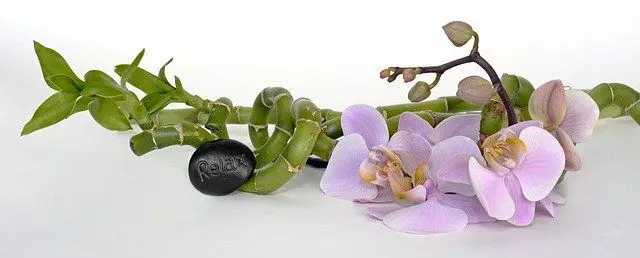
Feng Shui Plant Placement: Get Rid of Artificial Plants
This is very important. Feng Shui Plant Placement: Get Rid of Artificial Plants.
Many times, we decorate with artificial plants, especially flowers, in poorly ventilated or illuminated environments. However, there is nothing worse (energetically speaking) for Feng Shui than to decorate or surround yourself with dead life.
There should be no artificial plants in any form. Even natural plants must be healthy, growing well, and leaves in the greatest condition must be removed. The flow of vital energy must not be interrupted.
Feng Shui Plant Placement: Help your Hanging Plants to Grow Upwards
Plants and Feng Shui: Guide your hanging plants so they grow upwards. Especially with geraniums, helix ivy, petunias, and lobelias that easily grow downward, as that downward energy radiates negativity and a lack of strength and motivation to move forward. Another simple way to avoid the hanging effect is by placing overgrown leaves and branches on the furniture. This will greatly contribute to the loss of energy and to avoid the languishing effect.
Pothos represents a case among hanging plants. And as you can imagine, it is impossible to guide it to grow upwards. Pothos, unlike other hanging plants, has the peculiarity of absorbing both positive and negative energies.
Therefore, you should place it near the door or a window to protect and at the same time contribute to the flow of energy in the home. Do not abuse. You must limit their number. Remember that environments must be balanced. If you have more than three in your home, these plants will interfere with the energy balance.
How to place hanging plants? Feng Shui Plant Placement. Check what hanging plants you have at home.
Just to mention a few common indoor hanging plants that we should pay attention to and place their hanging branches parallel to the floor, rather than perpendicular to the floor.
- Christmas Cactus
- Columnea Goldfish plants
- Donkey Tail (Sedum morganianum)
- Senecio rowleyanus is the scientific name of the String of Pearls
- Senecio radicans, also known as String of Bananas
- Senecio peregrinus, also known as String of Dolphins
- String of Hearts (Ceropegia woodii)
- Peperomia rotundifolia
- Ferns
- Spider plant or Ribbon plant
- Wandering Jew Plant
The overhanging branches of hanging plants should be arranged so that they do not hang down. The downward growth toward the ground is not aligning and balances the Feng Shui’s energy of the home. We should only place the hanging plants near windows, in bright places, and arrange the hanging branches.
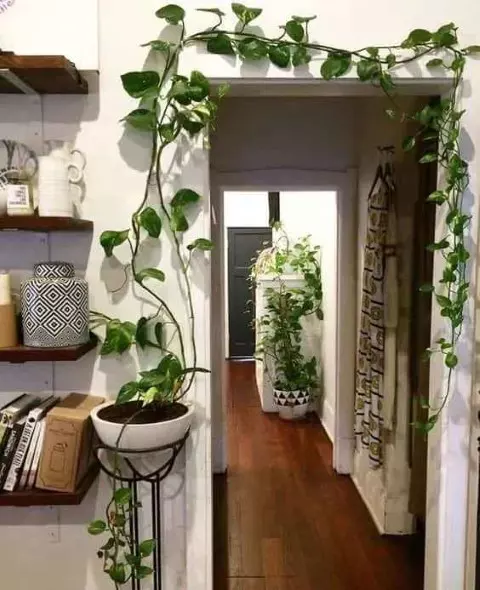
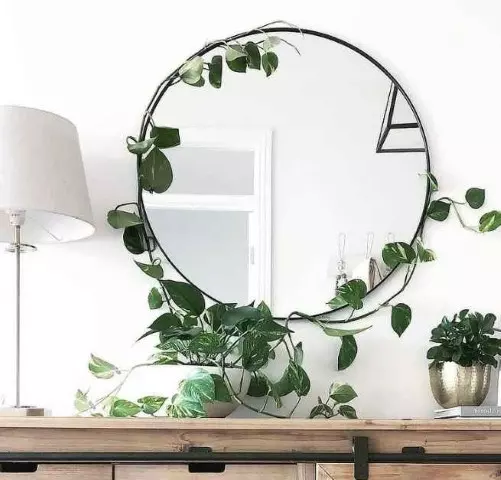
How to place Hanging Plants in Feng Shui? Here are some ways to place overhanging branches of hanging plants for Feng Shui Plant Placement.
Feng Shui Plant Placement: No Hydrangeas for Love
Hydrangea Feng Shui. Hydrangeas represent loneliness, so it is not prudent to have them in your home.
Hydrangea Feng Shui. Hydrangeas are also related to being single or widowed so if you are looking for a partner or if you already have one and want to keep it, avoid planting hydrangeas at home or use them as a bouquet to decorate any room inside.
Feng Shui Plants Can Boost Good Energy
Choose Plants with Flowers! According to Feng Shui, flowering plants will attract love. Whether you are alone or as a couple, you can enhance that this feeling reigns in your home through small pots with a flower, such as lavender, which will also give you a good smell and an atmosphere of relaxation.
Jade Plants are related to Money and Abundance. Orchids are associated with Serenity and Love.
The Prosperity Plant: Jade Plant (Crassula ovata)
Also named Lucky Plant, Money Plant, or Friendship Tree.
Jade Plant is a succulent plant with small pink or white flowers, grows indoors. Jade Plant is mostly associated with friendship, money, health, and fame and can be auspicious in all areas of the home.
Jade Plant will thrive in bright light conditions, even some morning hours of direct sun exposure. Watering will necessary only when the topsoil is dry. Jade Plant is the result of cutting and re-potting stems. Although it is common to grow it in the shape of a bonsai tree, remember that for Feng Shui growth should not be limited. Therefore, always keep a large container, which can grow and develop freely.
Dig into this article to know more about Succulents
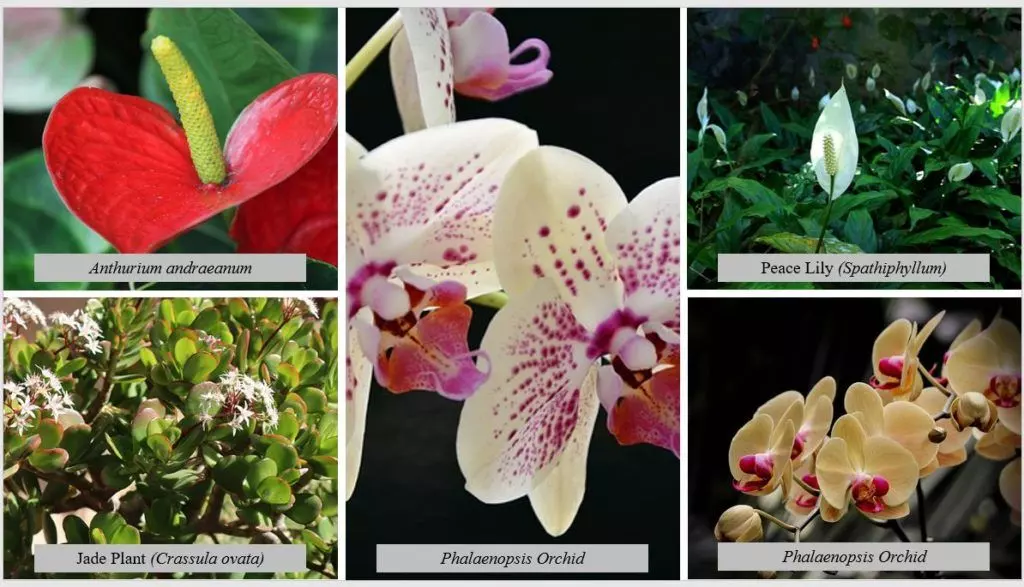
Lucky Bamboo (Dracaena sanderiana): Symbol of Fortune, Abundance, and Wealth
Lucky Bamboo and Jade Plant are the most popular Feng Shui Plants. Lucky Bamboo is a symbol of fortune, abundance, and wealth.
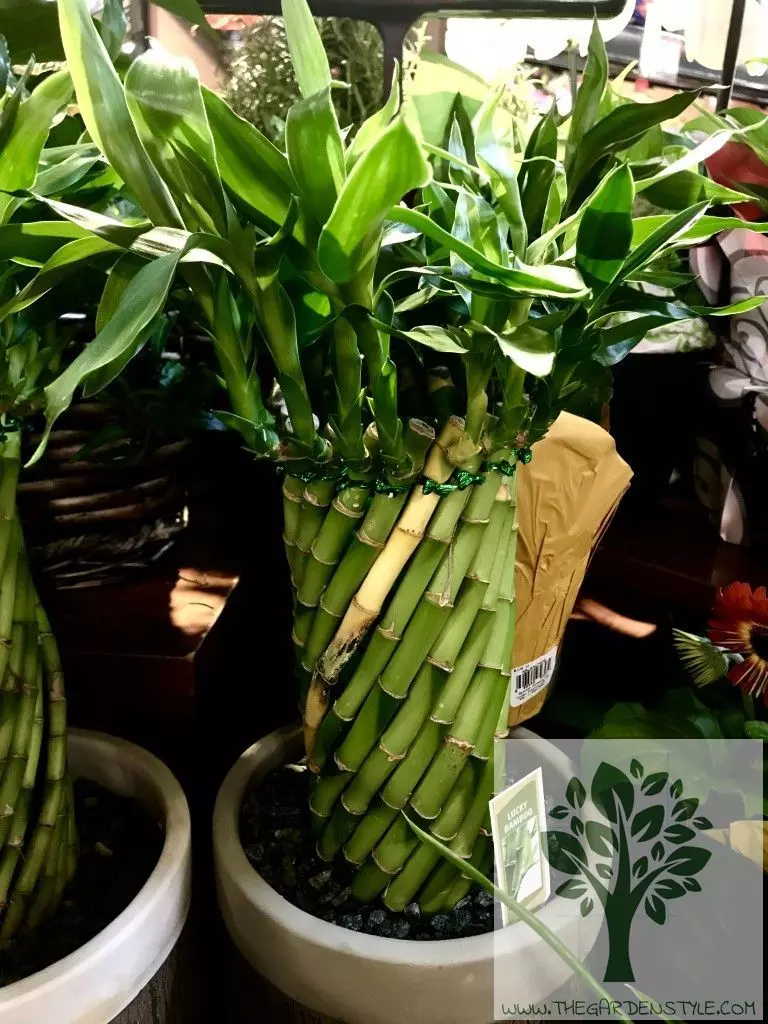
Since Bamboo grows in water, caring for Lucky Bamboo is simple. Lucky Bamboo grows in water arrangement; whether it’s a glass vase or any container filled with water. Remember to change the water and clean the container to avoid fungus and mold. Although this plant is easy to adapt to low light conditions, medium-light conditions will thrive. Avoid exposure to direct sunlight which will burn its leaves.
The number of stalks symbolizes different meanings in Feng Shui.
- One stalk symbolizes a strong, prosperous life.
- Two stalks; love.
- Three stalks; Happiness, Long Life, and Wealth.
- Four stalks: symbolize negative things such as negative energy and death. Never arrange four stalks together!
- Five stalks: health in the five areas of your life; Emotional, Intuitive, Physical, Spiritual, and Mental.
- Six stalks: for prosperity.
- Seven stalks: for good health.
Peace Lily (Spathiphyllum): The Plant Purifies and Balances the Energy of Home
Peace Lily Feng Shui. Peace Lily purifies the air and brings energy balance back to your home. Therefore, a Peace lily plant is definitely a plant allied to Feng Shui.
Taking care of the Peace Lily could be tricky because it is prone to brown tips and will require rapid attention if the leaves droop for over two days. Peace Lily thrives in medium light conditions.
However, the higher the indirect lighting the better and more beautiful will be the white leaves. Overwatering this plant will damage it drastically. The secret to avoiding overwatering is to not water on a schedule. Check the soil before watering. Watering should only when the first inch on the topsoil is completely dry. Prefer the use of distilled water to prevent brown tips.
Feng Shui Plant Placement and Plants in the Master Bedroom
Feng Shui Plants In Bedroom. Not all plants are allowed in the master bedroom according to Feng Shui. In the following paragraphs, I have two of the Best Feng Shui Plants for indoors and particularly special for bedrooms.
Feng Shui Plants In Bedroom. The double bedroom or master bedroom is considered a feminine room. Just as it seeks to harmonize pastel and feminine colors such as pink or aqua green and their shades of these colors, it also seeks to harmonize with allowed plants.
Feng Shui Plants In Bedroom. Just one or two plants and very limited species are allowed. Only flowering plants such as Phalaenopsis orchids and Anthurium andraeanum (due to their heart shape and intense red color) can be placed in the bedroom.
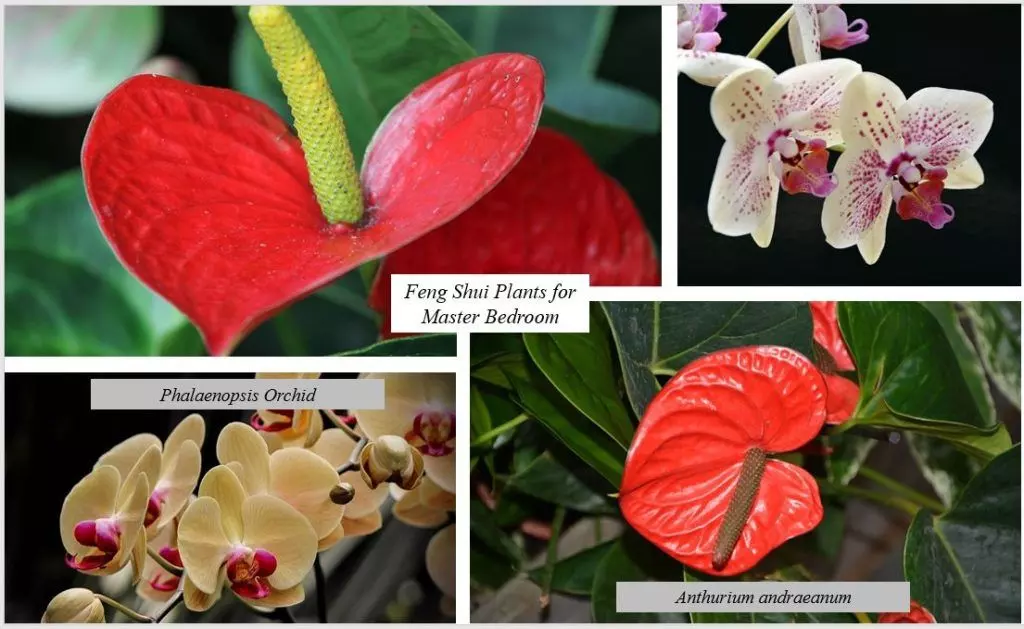
Orchids In Bedroom Feng Shui – Orchis (Orchidaceae): To Attract Serenity and Love, Harmonizing Relationships
Feng Shui Plants In Bedroom. For Feng Shui, orchids enhance serenity and love, harmonizing relationships. It is a plant that can be placed in a double bedroom if the light is appropriate.
Orchids In Bedroom Feng Shui. Orchids are relatively easy to care for. They need full of light but not direct sunlight. Orchids thrive in high humidity, but they don’t require frequent watering. Depending on the weather, just watering once a week for a few minutes may be enough. Unlike other plants, among the varieties of orchid species, the cultivation conditions vary between species.
Orchids In Bedroom Feng Shui. One of the most popular varieties for its beautiful flowers, inexpensive, long-lasting blooms, and ease of care is the species: Phalaenopsis.
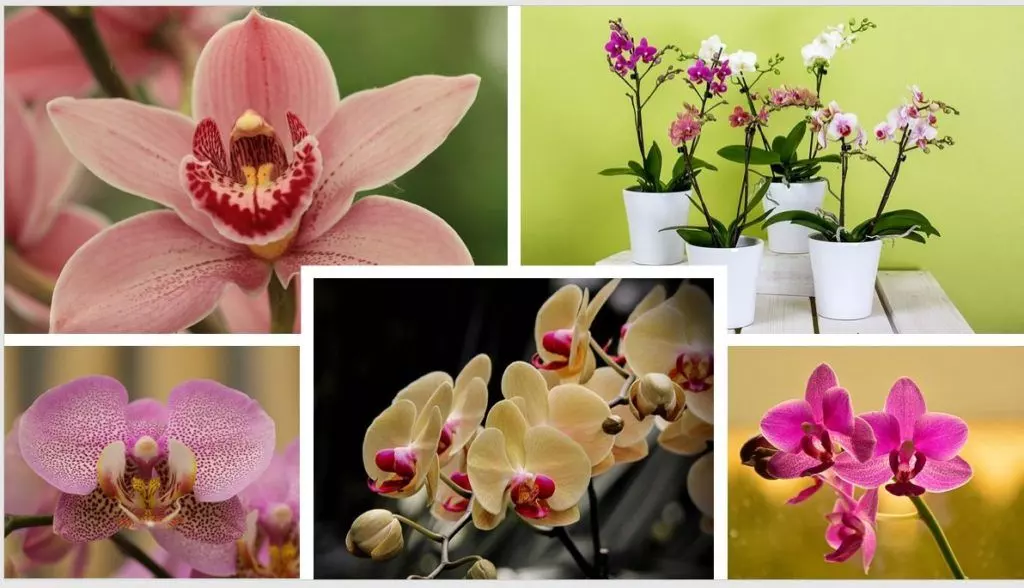
Phalaenopsis Orchid
Orchids In Bedroom Feng Shui. Phalaenopsis Orchid will thrive indoors between 65-85 F (18-29 C). It should be protected from temperatures below 55 F (13 C). Locate away from drafts. The color of the roots will indicate the health of the plant.
Green roots are healthy, white roots are underwater, and brown, or black roots mean overwatered conditions. Blooms will drop after 2-3 months. Organic fertilization will be needed 1-2 times per month during dormancy. Every 1-2 years, the orchid needs to be re-potted into a 1-2″ larger pot using orchid bark media.
I hope you’ve found this article helpful to boost the good energy of your home giving by Feng Shui advice.
